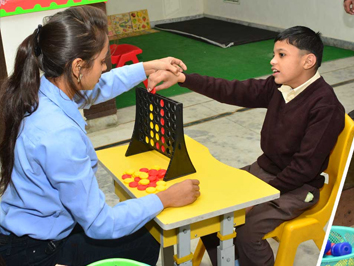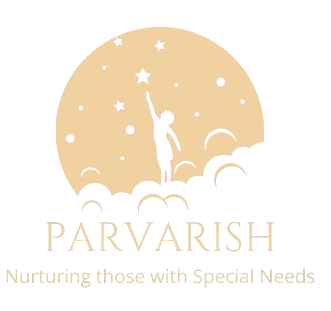
ABA Therapy for Autistic Children and Children with Special Needs
Applied Behavior Analysis (ABA) therapy is an evidence-based intervention proven to help children with autism and other special needs. By breaking down complex skills into manageable steps and reinforcing positive behaviors, ABA therapy creates a structured learning environment that not only promotes skill development but also enhances overall quality of life.
What Is ABA Therapy?
ABA stands for Applied Behavior Analysis. It is a systematic approach grounded in behavioral science that focuses on understanding and modifying behavior through well-defined principles of learning.
Core Approach:
The therapy deconstructs desirable or challenging behaviour into smaller components, teaching them one step at a time. This gradual process uses repetition and reinforcement—often in the form of praise, rewards, or preferred activities—to build new, adaptive behaviour.
ABA therapists employ various techniques such as:
Positive Reinforcement: Rewarding desired behaviours to encourage their repetition.
Prompting and Fading: Using cues to initiate behaviour and gradually reducing assistance as the child masters the skill.
Task Analysis: Breaking complex behaviours (like dressing or social interactions) into achievable steps.
Data Collection: Carefully tracking progress to fine-tune interventions and ensure each child’s needs are met.
Who Provides ABA Therapy?
Trained Professionals: ABA therapy is typically administered by Board Certified Behaviour Analysts (BCBAs) who design and oversee individualized treatment plans.
Support Team: Registered Behaviour Technicians (RBTs) and other support staff—often including educators and therapists—work under the supervision of a BCBA. Parents and caregivers are also integral to the process, learning strategies to reinforce progress at home.
Collaborative Approach: A successful ABA program hinges on collaboration between therapists, family members, and educators to ensure consistency and maximize outcomes across different settings.
Benefits of ABA Therapy
Structured Learning Environment: ABA breaks down learning into manageable tasks, making it easier for a child to master new skills in a controlled, supportive setting.
Enhanced Communication: Many children experience significant improvements in both verbal and non-verbal communication, learning to express needs, wants, and emotions more effectively
Improvement in Social Skills: Customized interventions help children understand social cues and engage more appropriately with peers and adults, facilitating better interactions in group settings.
Reduction of Challenging Behaviours: ABA techniques focus on decreasing behaviours that may be disruptive or harmful by teaching healthier, more adaptive alternatives.
Individualized Learning Goals: Every child’s program is tailored specifically to their unique strengths, needs, and pace of learning. This ensures that each step in the process is both relevant and achievable.
Outcome of ABA Therapy
Behavioural Improvements: Consistent ABA therapy can lead to substantial reductions in problem behaviours, replaced with positive actions that enrich daily life.
Skill Acquisition: Enhanced cognitive, social, and self-help skills empower children to navigate educational settings, communicate more effectively, and increase their independence.
Enhanced Social Integration: Improvement in social functioning means many children are better able to integrate with peers, participate in group activities, and ultimately succeed in diverse social environments.
Long-Term Benefits: Early and sustained ABA therapy can pave the way for lasting improvements, setting a strong foundation that supports academic progress, personal development, and a smoother transition into mainstream activities.
Consistency Across Environments: The success of ABA therapy depends not only on consistent sessions with a professional but also on incorporating these strategies into everyday activities at home and in school.
Holistic Integration: ABA is frequently most effective when paired with other therapies—such as speech therapy, occupational therapy, or social skills training—to address the diverse needs of children with autism and other special needs.
Family Involvement: Educating and empowering caregivers helps reinforce the therapeutic strategies outside of formal sessions, ensuring that progress remains steady and meaningful.
Parvarish Helps in
Understanding the evolving landscape of behavioral interventions can be crucial. Parvarish Understands the needs and helps in prospective integration of digital monitoring tools, telehealth enhancements, or interdisciplinary techniques that further refine and personalize ABA therapy. These innovations ensure that children receive the most current, adaptable, and effective support tailored to their unique developmental journey.
